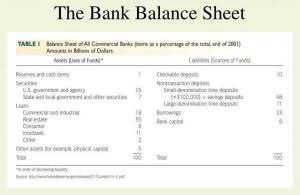
The selling and marketing expenses increased by 7.4% from Rs 43,438 million in 2023 Interior Design Bookkeeping to Rs 46,648 million in 2024. The general and administrative expenses also grew by 2.1% from Rs 39,426 million to Rs 40,250 million. The profit before tax marginally declined by 0.3% from Rs 98,438 million in 2023 to Rs 98,147 million in 2024. The net cash generated from operating activities for the year ended March 31, 2024, was Rs 176,216 million compared to Rs 130,601 million for the year ended March 31, 2023. For example, let’s say Reliance Industries had revenue of Rs.5,00,000 crores in 2023 (base year) and revenue of Rs.6,00,000 crores in 2024 (current year).
- Strike offers a free trial along with a subscription to help traders and investors make better decisions in the stock market.
- A company’s financial performance might look good in isolation, but it could still lag behind its competitors or industry standards.
- Analyzing equity changes over time can provide insights into how the company has financed its operations and whether it has generated profits or incurred losses.
- We will explore how ManufacturingCo, Inc. uses horizontal analysis for internal performance evaluation and regulatory compliance.
- However, this method provides only an overview of the financial health of the business and it is often performed by external stakeholders.
- The latter two tend to go hand-in-hand because the most useful benchmark against which to compare recent performance is most often the preceding period.
- The horizontal analysis formulas are employed to illustrate the revenue growth over time.
What are the Differences Between Horizontal vs Vertical Analysis?
In this example the business is looking for trends over the three years from 2019 to 2021. By producing the horizontal analysis it is possible to monitor changes in each line item over time. It allows you to evaluate normal balance how effectively a company is converting its revenue into profits. By examining the changes in profitability over time, you can assess the company’s overall financial health.
Use Cases: Applying the Horizontal Analysis Formula

Horizontal analysis is a financial analysis technique that compares financial information over multiple periods to identify trends and changes. Horizontal analysis is used to assess a sequence of financial statement data over a specified time frame. By comparing financial results from prior periods with those from more recent periods, a company enhances its capacity to determine the direction and magnitude of account balance movements. Horizontal analysis allows for the comparison of financial data over time, highlighting trends, patterns, and changes in performance.
Trial Balance
- Vertical analysis focuses on a single period and expresses each line item as a percentage of a base figure, such as total revenue or assets.
- From 2023 to 2024, Reliance Industries’ revenue increased by Rs.1,00,000 crores, or 20%.
- By converting nominal changes into percentages, you gain a clearer picture of proportional changes and can make more informed decisions regarding strategy and resource allocation.
- Horizontal analysis provides insight into the direction in which a company’s financial data is moving.
- In contrast, horizontal analysis compares data over multiple periods, revealing trends and changes over time.
The percentages are particularly noticeable when an account experiences an abrupt up or down Swing. This enables managers to investigate the variances and ascertain their causes, whether they are positive or negative. Alterations that occur abruptly sometimes indicate a permanent shift that necessitates action or is indicative of unique circumstances during that time. The revenue decreased by 0.8% from Rs 604,234 million in 2023 to Rs 599,327 million in 2024. The cost of revenues also declined by 2.2%, from Rs 430,297 million to Rs 420,998 million during the same period.
- Obviously financial statements for at least two accounting periods are required, however, using a larger number of accounting periods can make it easier to identify trends within the financial data.
- Depending on the metrics you want to focus on, you will need different financial statements, like balance sheets, income statements, or cash-flow statements.
- Dollar amount changes provide a clear picture of the absolute differences in financial figures over time.
- Comparative financial statements serve as the cornerstone of horizontal analysis.
- If you use Layer, you can even automate parts of this process, including the control of data flows, calculations, and sharing the results.
Horizontal Analysis Formula
With real-time dashboards, they could track costs instantly and make better decisions. Horizontal analysis of the cash flow statement helps you see horizontal analysis formula how cash is being managed year over year. In the end, horizontal analysis turns financial data into actionable insights. Are operating expenses spiraling out of control, or is the company tightening its belt? This approach not only looks at the numbers but also tracks their evolution.

Select the Time Period

Percentages offer an excellent way to measure proportional changes, but they can sometimes be misleading. For instance, a company with minimal debt might display a 500% increase in interest expense if its debt grows from $10,000 to $50,000—even though the absolute figure is relatively small. Always analyze both the percentage and the absolute values to obtain a full picture. Cash flow statements also provide insights into a company’s investing and financing activities. Analyzing these sections helps you understand how the company allocates its resources and manages its capital. Percentage changes are a crucial part of horizontal analysis as they reveal the relative magnitude of changes between the base year and the current year.